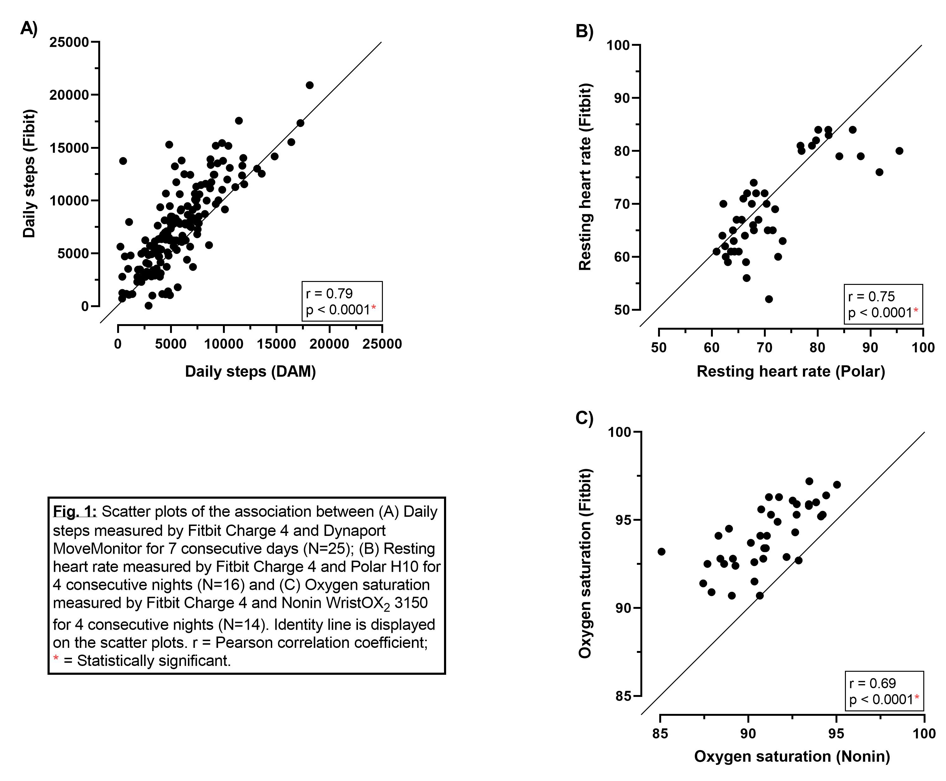Abstract
Introduction
Commercially available activity trackers are becoming more popular and provide opportunities to track patients? vital signs remotely.
Aim
To explore the validity of Fitbit to measure daily steps, oxygen saturation (SpO2) and resting heart rate (RHR) in patients with COPD.
Methods
Patients wore Fitbit and (1) Dynaport MoveMonitor (DAM) (daily steps); (2) Nonin WristOX2 3150 (SpO2) and (3) Polar H10 (RHR). The agreement between day-by-day measures of Fitbit and corresponding gold-standard devices was evaluated via intraclass correlation coefficient (ICC), paired t-test and Pearson correlation.
Results
Assessment of 25 patients (80% male, age 70±6y, FEV1 52±15%pred, 5732±3278 steps/day, 71±9 bpm RHR, 91±2% SpO2) resulted in 170, 44 and 39 patient-days for respectively steps, RHR and SpO2. Data showed good agreement for steps (ICC=0.82;95%CI 0.55-0.91) and RHR (ICC=0.85;95%CI 0.71-0.92) and moderate agreement for SpO2 (ICC=0.49;95%CI -0.21-0.81). Mean steps and SpO2 were significantly higher compared to DAM and Nonin (+1719±2451steps/day;p<0.001, +3.03±1.67%;p<0.001) whereas mean RHR was significantly lower compared to Polar (-2.12±6.10bpm;p=0.03). Correlations were strong (fig 1).
Conclusion
Although Fitbit Charge 4 shows moderate to good agreement, measures of steps, RHR and SpO2 deviated from gold-standard methods. Future research should examine its validity to pick up day-by-day changes.
